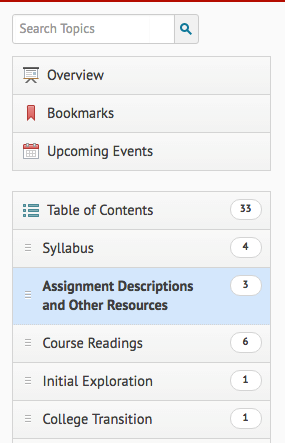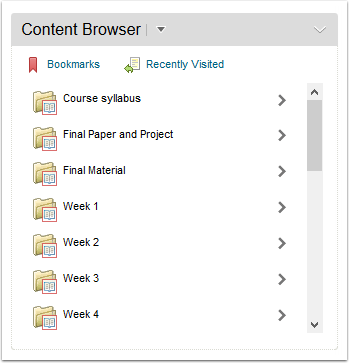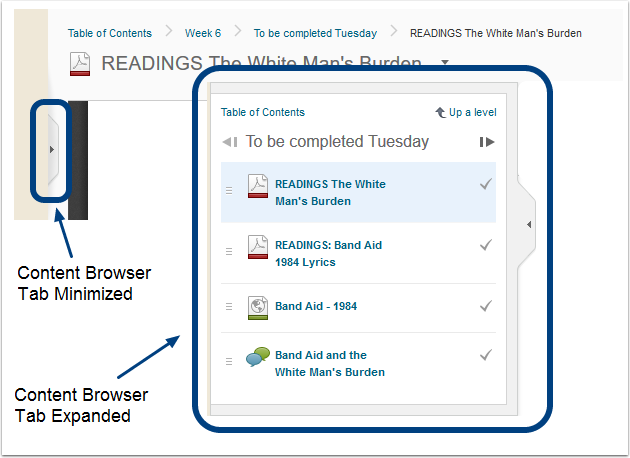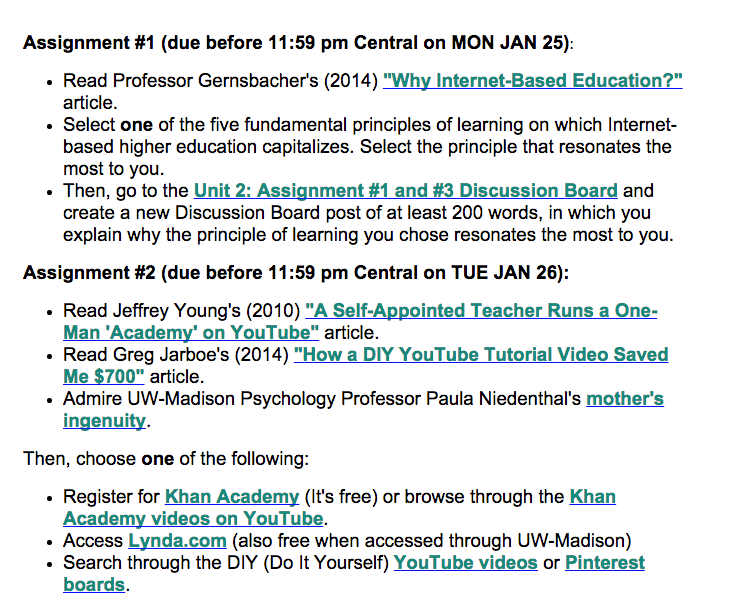Part 2: Build a Course in D2L
Find Your Way in D2L
Before you build the online components of your course, it makes sense to consider its organization and navigation structure. How will students know what to do in your course, or when they need to do it? Research into student behavior has demonstrated that the easier instructors make it for students to access course material (readings, activities), the more likely it is that students will complete that material.
Understanding D2L’s basic organizational and navigational components is essential if you wish to organize your course effectively, make it easier for students to interact with your course’s content, and in turn improve student performance over the semester.
Navigating from the Table of Contents
The Table of Contents provides an organized view of course activities and materials (i.e. content). It is easily accessed through the Content link in the Materials Tab on the NavBar. The Table of Contents displays a Course Overview, Modules, and the content within the modules. Content and activities are known as Topics in D2L nomenclature. Students access this by clicking content titles.
Components of the Table of Contents.

Module List
On the left hand side of the Table of Contents is the list of modules included within the course. This is much like a table of contents you might find in a book listing the chapters.
Topics
Activities and files within a Module are referred to as Topics. When a student clicks on a Module in the Module list, the contents of that Module opens in the center of the screen. Students can access the files and activities within the module by clicking on the name of the activity or files (i.e. the Topics).

Navigating with D2L’s Built in Navigation Tools
D2L courses have built in navigation that may suit your needs. Let’s take a look at the basic Navigation elements.
 The Content Browser
The Content Browser
The Content Browser is a homepage widget that is included with the default D2L homepage. It duplicates the modules from the Table of Contents and presents them as folders. When student expand the folders, they can see the content and activities included in that module. Students can navigate directly to the material from the Content Browser.
Content Browser Tab
When students are in content or an activity, they can navigate around the course by using the Content Browser Tab.
See the image below.

Students click on the tab to expand it. The tab mirrors the content browser. Modules are top level navigation. Students can go down a level to access links for content or activities within the modules. Note the forward and back arrows at the top of the tab. Those move student to the previous module or next module as laid out in the Table of Contents. Students can also go directly to the Table of Contents by using the Breadcrumb link above the arrows at the top of the Content Browser Tab.
Breadcrumb links
Along the top of many activities or pieces of content, Breadcrumb links will be displayed along the left hand side. These links demonstrate the hierarchy of the content being viewed within a module.
![]()
Navigation Tools in Content
On the top right hand side of a page are four options: bookmark a page, view content in a new window, and move to the previous or next page within a module.

In-text Navigation
In-text navigation are the links connecting words and phrases to corresponding readings and activities. They have formed the backbone of internet navigation since the mid-1990s.
See the blue underlined words in the example below. (Note, this is an image. Links do not work) When students click on them they are automatically taken to a new site, preferably one that corresponds to the text that is linked.
In-text navigation may be especially useful for fully online classes, self-registration classes or classes with a lot of content the instructor has written. Instead of asking students to cut and paste a webpage URL address, or navigate to a new activity, a link can be established that carries them to that webpage or activity much more quickly.

